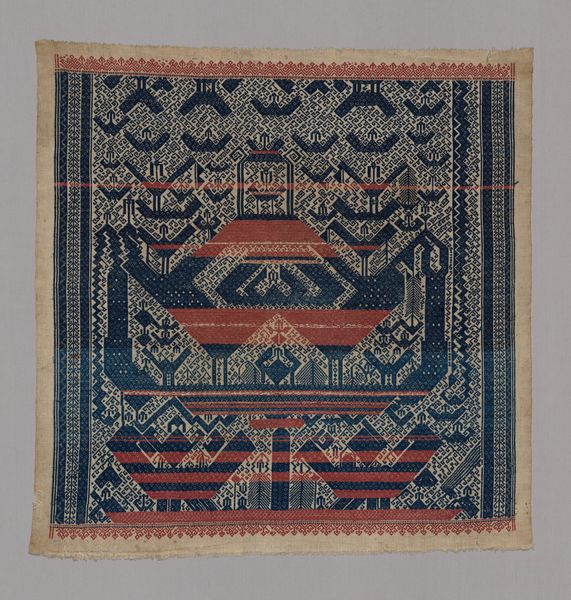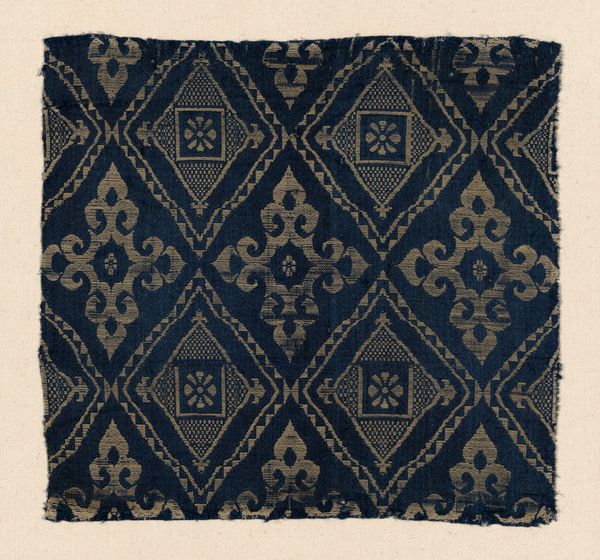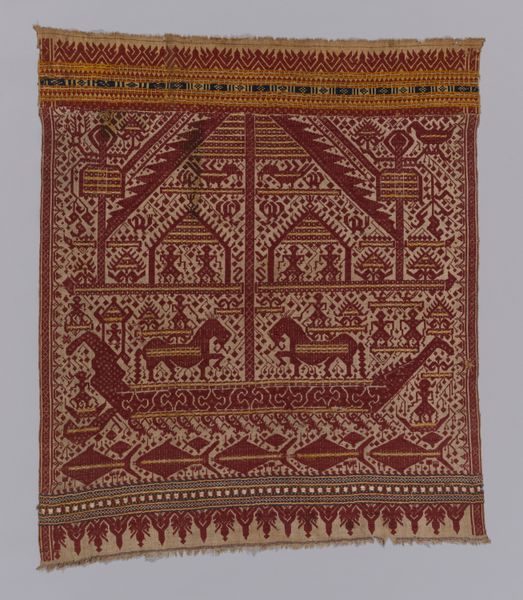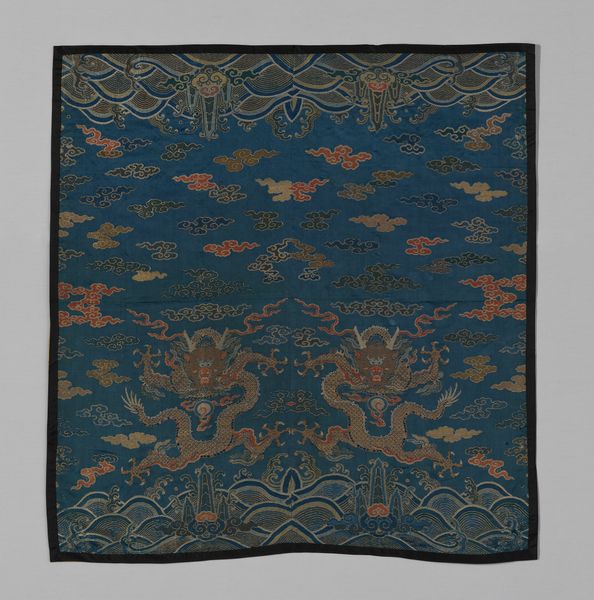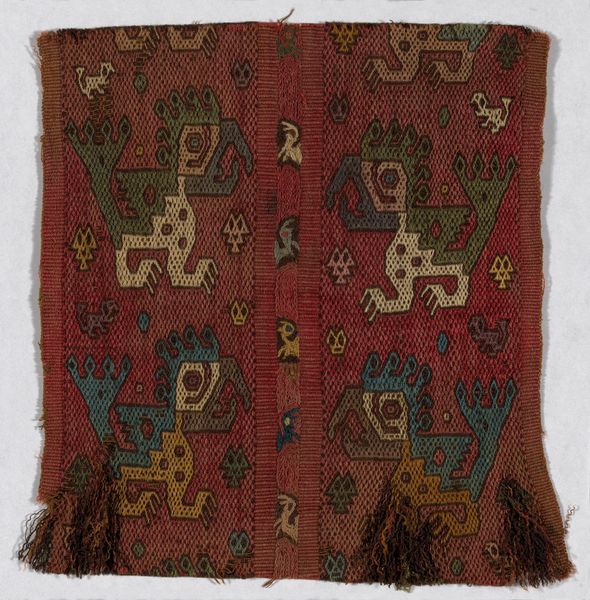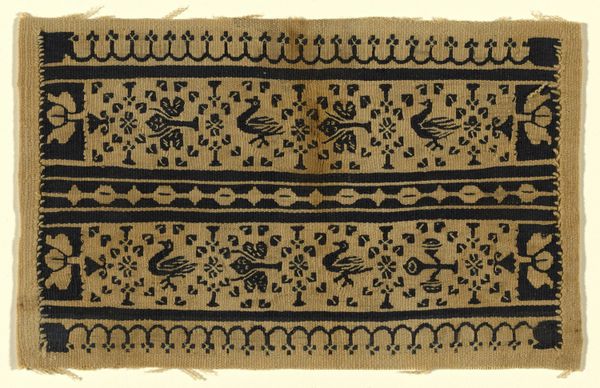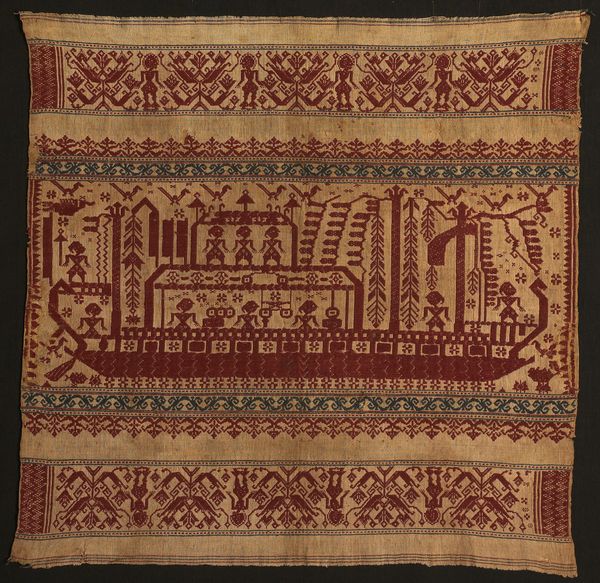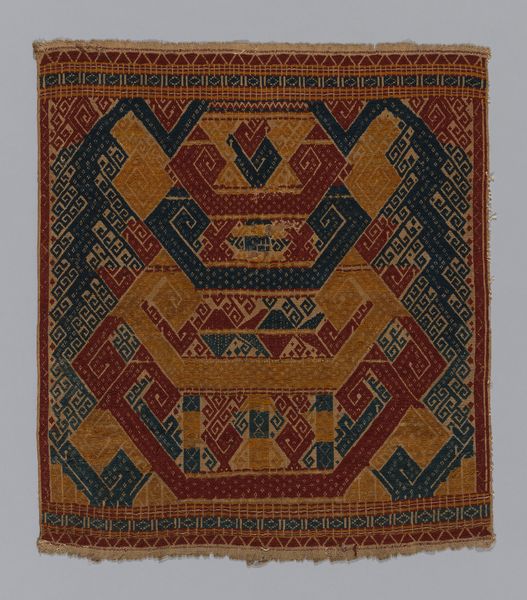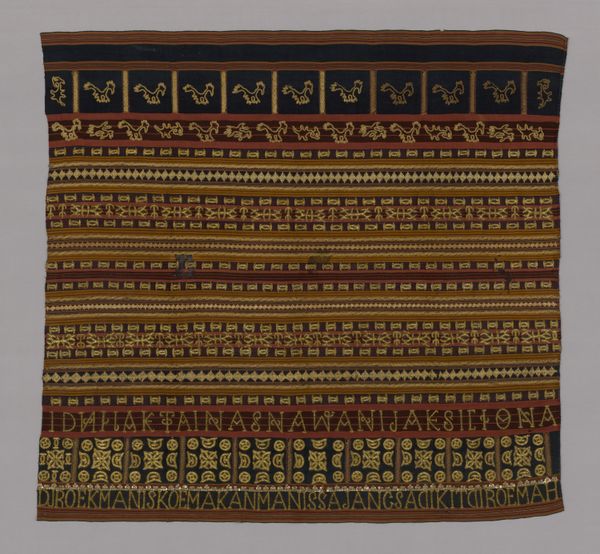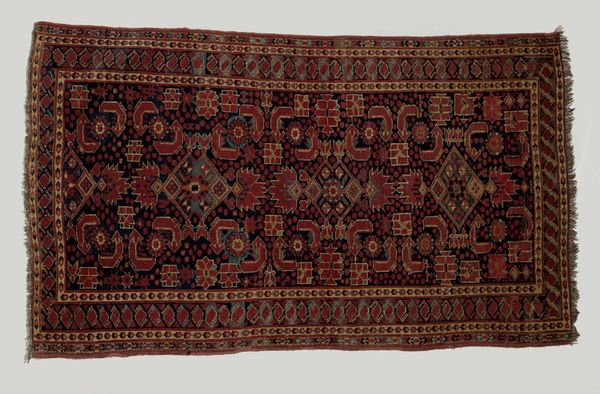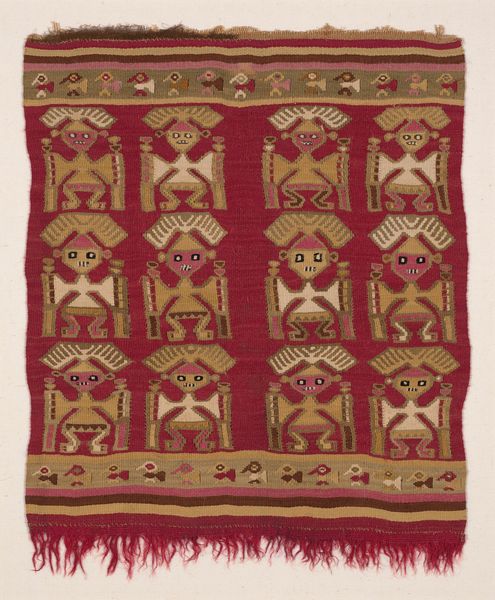
fibre-art, weaving, textile
#
fibre-art
#
pattern
#
asian-art
#
weaving
#
textile
Dimensions: 71 × 70.4 cm (28 × 27 3/4 in.)
Copyright: Public Domain
Curator: This textile, a ceremonial cloth known as a Tampan, originates from the 19th century Paminggir region. It’s currently housed here at the Art Institute of Chicago. Editor: It strikes me immediately as being powerfully symbolic. There's an immediate formality to the composition. The figures are regimented and boldly symmetrical, split by the three horizontal bands. It communicates a deliberate order and evokes strong feelings, maybe even ritualistic reverence. Curator: Absolutely. Tampan cloths like this were integral to social rituals in South Sumatra. They functioned as visual markers during rites of passage like weddings, playing a part in negotiating social standings, expressing shared beliefs, and mediating spiritual transactions. Editor: How fascinating. It seems the iconography reinforces societal hierarchies, perhaps referencing notions of power, nature and cosmic harmony through its representations of animal figures, which do have a totemic quality to them. Do we know what kind of fiber this textile is made from? The pattern work has such precise lines, giving the work a monumental visual presence. Curator: Most Tampan cloths are crafted using cotton, with supplementary weft techniques that give texture and depth. These textiles go beyond aesthetics, acting as historical records holding narratives of a society deeply invested in connecting earthly affairs to cosmological structures. The repeated motifs you notice carry encoded cultural significance, conveying both overt and tacit cultural values. Editor: So the weaver acts as both artist and historian, using material and symbolic understanding to engage audiences with the spiritual. That tension, of aesthetics meeting encoded meanings, becomes charged when removed from their community use, presented in a museum setting. The conversation continues, only recontextualized. Curator: Precisely. Its transformation raises fundamental questions regarding authenticity, cultural ownership, and respectful dialogue between its cultural origin and modern appreciation. Editor: That reminds me how, while celebrating this striking object, we must be conscious about its ongoing agency, not as static objects of admiration, but living texts communicating lived social realities. Curator: Yes, this single cloth encourages layers of readings, making it simultaneously art, history, and active participant within cultural narratives.
Comments
No comments
Be the first to comment and join the conversation on the ultimate creative platform.
